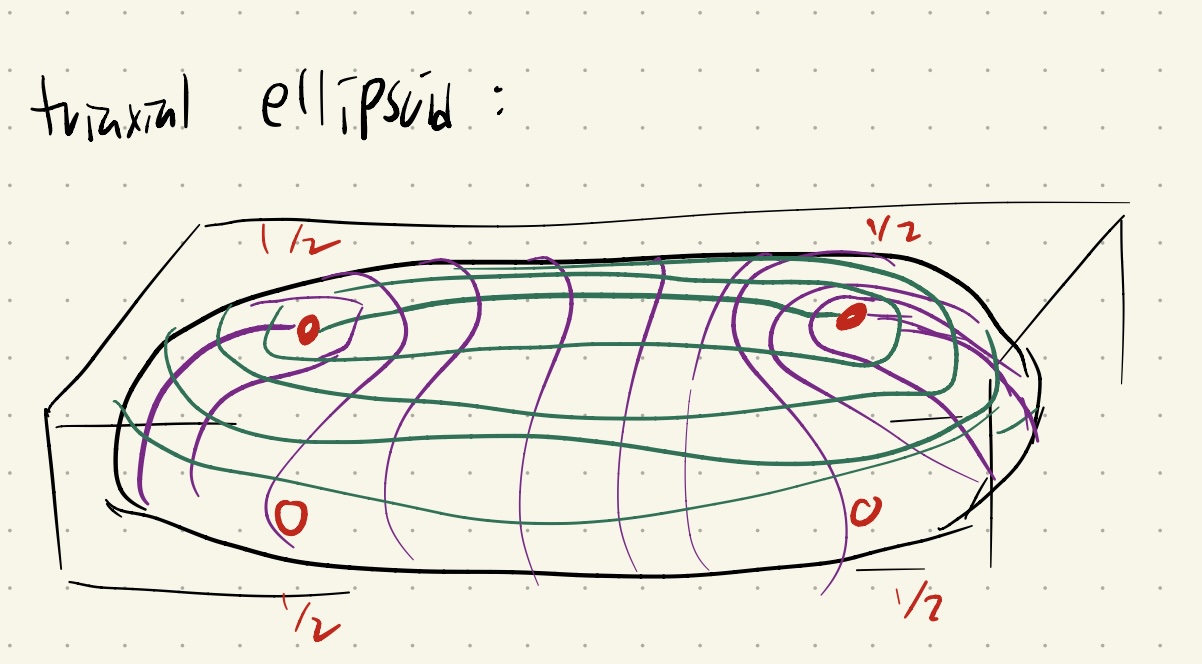Symplectic geometry for classic curves and surfaces: The Caratheodory conjecture
Summary:
We call a point on a surface in $\mathbb{R^3}$ umbilic if both its principal curvatures are equal. The Carathedory conjecture, circa 1920s, posits that every topological sphere, embedded convexly in $\mathbb{R^3}$, has at least two umbilic points. I will discuss a (controversial) purported proof of the Carathedory conjecture using symplectic geometry and J-holomorphic curves, due to Guilfoyle and Klingenberg. This involves thinking of a surface though its congruence of normal lines, which traces out a lagrangian in the moduli space of lines in $\mathbb{R^3}$. The umbillic points are exactly the complex points of the lagrangian.
Presented at:
- Student symplectic seminar
🔗 Link to file
Here’s a fun application of these methods. The rays of light coming out of a point source can be thought of as a pencil of lines in $\mathbb{R}^3$. This pencil is the normal pencil to a surface. Now imagine we reflect or refract the light, through a series of mirrors and lenses. The Malus-Dupin theorem states that, if your light rays start normal to surface, then after the reflections and refractions, they are still normal to a (perhaps different) surface.
Here’s the proof, stolen from the Malus-Dupin theorem from wikipedia. As I explain in the notes above, a pencil of lines (thought of as a surface in the space of lines in $\mathbb{R}^3$) is normal to a surface if and only if it is Lagrangian. Reflections and refractions act on the space of lines by symplectomorphisms. Therefore, it preserves Lagrangians, and the resulting light rays are still normal to a surface.
